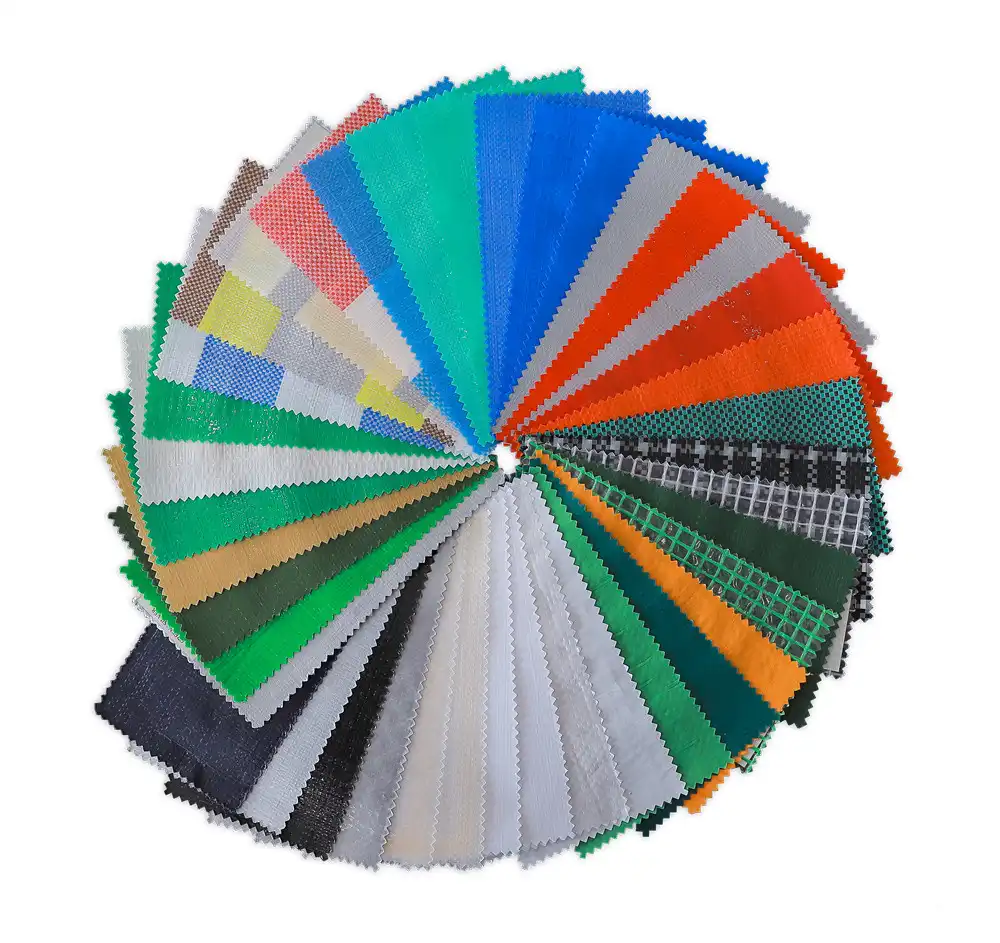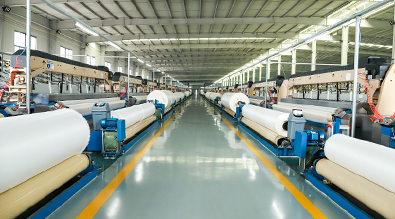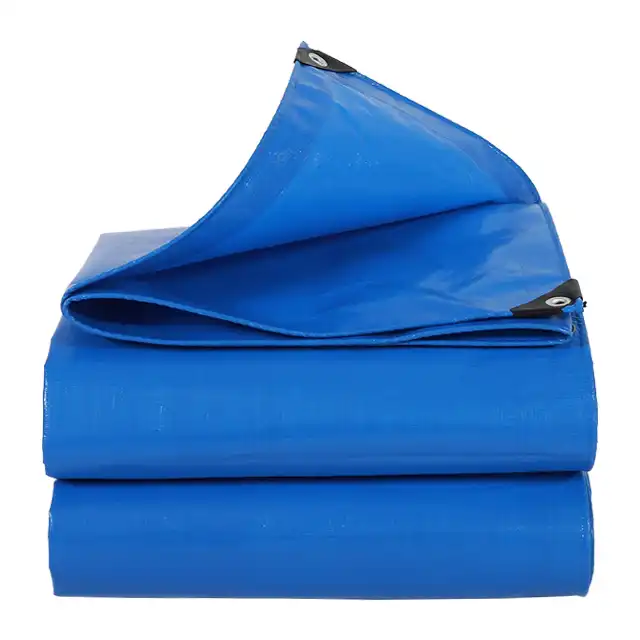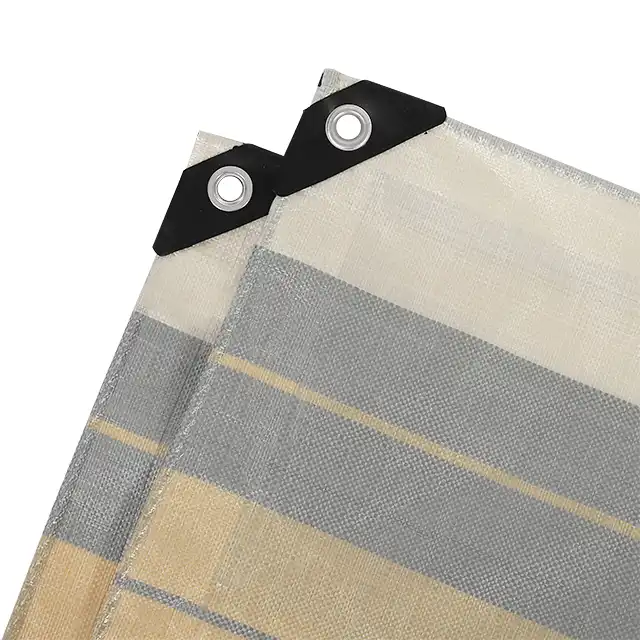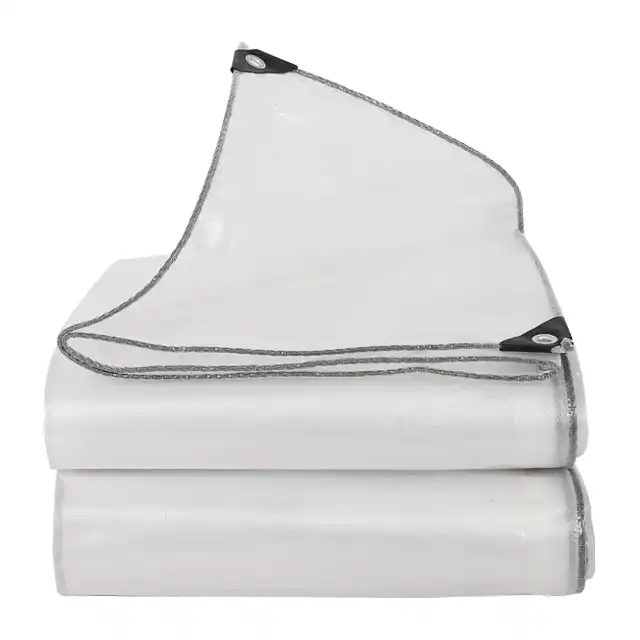Tarpaulin Lifespan and Maintenance Tips
Picture this scenario: You've just invested in what seemed like a durable tarpaulin for your construction project, only to find it deteriorating after just a few months of outdoor exposure. The frustration of premature tarp failure costs you time, money, and project delays. Understanding tarpaulin lifespan and implementing proper maintenance practices can transform your protective covering from a short-term expense into a long-term investment that delivers reliable performance year after year.
Understanding Tarpaulin Durability and Lifespan Factors
 The lifespan of a tarpaulin depends significantly on its construction materials and manufacturing quality. High-density polyethylene (HDPE) tarpaulins, particularly those manufactured with tightly woven polyethylene fibers and dual-side lamination, demonstrate superior longevity compared to standard alternatives. Professional-grade tarpaulin products typically feature reinforced construction that extends their operational life considerably beyond basic utility tarps. Environmental exposure represents the primary factor affecting tarpaulin lifespan. UV radiation from sunlight causes polymer degradation over time, while extreme temperatures can make materials brittle or cause expansion and contraction cycles that stress fabric integrity. Quality tarpaulin manufacturers incorporate UV-resistant treatments into their products, with concentrations ranging from 1% to 7% UV protection additives that significantly extend outdoor performance. Heavy-duty poly tarps constructed with HDPE woven fabric and LDPE coating provide enhanced resistance to environmental degradation, maintaining structural integrity for extended periods. The application environment also influences durability expectations. Tarpaulins used for temporary construction covering may experience different stress patterns compared to those deployed for long-term agricultural applications or aquaculture installations. Professional-grade tarpaulin products designed for commercial use incorporate tear-resistant features and anti-corrosion properties that maintain performance across diverse operating conditions.
The lifespan of a tarpaulin depends significantly on its construction materials and manufacturing quality. High-density polyethylene (HDPE) tarpaulins, particularly those manufactured with tightly woven polyethylene fibers and dual-side lamination, demonstrate superior longevity compared to standard alternatives. Professional-grade tarpaulin products typically feature reinforced construction that extends their operational life considerably beyond basic utility tarps. Environmental exposure represents the primary factor affecting tarpaulin lifespan. UV radiation from sunlight causes polymer degradation over time, while extreme temperatures can make materials brittle or cause expansion and contraction cycles that stress fabric integrity. Quality tarpaulin manufacturers incorporate UV-resistant treatments into their products, with concentrations ranging from 1% to 7% UV protection additives that significantly extend outdoor performance. Heavy-duty poly tarps constructed with HDPE woven fabric and LDPE coating provide enhanced resistance to environmental degradation, maintaining structural integrity for extended periods. The application environment also influences durability expectations. Tarpaulins used for temporary construction covering may experience different stress patterns compared to those deployed for long-term agricultural applications or aquaculture installations. Professional-grade tarpaulin products designed for commercial use incorporate tear-resistant features and anti-corrosion properties that maintain performance across diverse operating conditions.
-
Material Composition Impact on Longevity
Different tarpaulin materials exhibit varying lifespan characteristics. Polyethylene-based tarps with mesh counts between 10x10 and 14x14 provide balanced durability and flexibility. The thickness specification, typically ranging from 7 to 12 mil for middle-duty applications, directly correlates with expected service life. Weight specifications from 65gsm to 280gsm indicate material density and potential durability, with heavier constructions generally offering extended operational periods. Advanced manufacturing processes that integrate high-strength yarn construction contribute significantly to tarpaulin longevity. These reinforcement elements provide structural stability that prevents premature failure under stress conditions. The lamination process used in quality tarpaulin production creates moisture barriers that prevent water penetration and subsequent material degradation.
Essential Tarpaulin Maintenance Strategies
Proper maintenance practices can double or triple the effective lifespan of quality tarpaulin products. Regular cleaning removes accumulated debris, pollutants, and organic matter that can compromise material integrity over time. Use mild soap solutions rather than harsh chemicals that might damage protective coatings or UV-resistant treatments applied during manufacturing. Storage procedures significantly impact tarpaulin longevity when products aren't actively deployed. Proper folding or rolling techniques prevent permanent creasing that creates stress concentration points. Storage areas should maintain consistent temperature and humidity levels while protecting tarpaulins from rodent damage, sharp objects, and chemical exposure. Clean, dry storage environments prevent mold growth and material degradation during inactive periods. Inspection routines help identify potential issues before they develop into major problems. Regular examinations should focus on seam integrity, surface condition, and grommet attachment points. Early detection of minor tears, abrasion areas, or UV-related surface changes allows for preventive repairs that extend overall service life. Professional tarpaulin products with features like arctic flexibility and anti-freezing properties require specific maintenance considerations to preserve these enhanced characteristics.
-
Cleaning and Care Protocols
Effective tarpaulin cleaning involves systematic approaches that preserve material properties while removing contaminants. Begin with dry brushing to remove loose debris and surface dirt. Follow with gentle washing using clean water and mild detergent solutions, avoiding high-pressure washing that might damage fabric weave or coating integrity. Thorough rinsing removes soap residues that could attract dirt or compromise water-resistant properties. Drying procedures require adequate ventilation to prevent moisture retention that encourages mold growth. Avoid direct sunlight during extended drying periods, as concentrated UV exposure during wet conditions can accelerate material degradation. Complete drying before storage prevents condensation-related problems that compromise tarpaulin integrity over time.
Maximizing Tarpaulin Performance Through Proper Installation
Installation techniques directly influence tarpaulin lifespan by distributing stress loads effectively and preventing damage during deployment. Proper tensioning prevents wind-induced flapping that creates fatigue stress in fabric fibers and attachment points. However, excessive tension can overstress materials and lead to premature failure, particularly around grommets and reinforced areas. Secure attachment methods protect tarpaulin edges from wind damage and mechanical stress. Quality tarpaulin products feature reinforced grommets and edge construction designed to handle installation loads, but proper technique remains essential for maximizing performance. Consider environmental factors like prevailing wind patterns, temperature variations, and potential debris impact when planning tarpaulin installations. Professional installation practices account for thermal expansion and contraction cycles that affect tarpaulin dimensions throughout seasonal temperature changes. Allowing appropriate slack during hot weather installation prevents excessive stress when materials contract during cooler periods. Conversely, installations during cold conditions should account for thermal expansion that occurs with temperature increases.
-
Environmental Protection Strategies
Minimizing environmental exposure extends tarpaulin lifespan significantly. When possible, position tarpaulins to reduce direct UV exposure during peak sunlight hours. Strategic placement can utilize natural shade or structural elements to protect critical areas from concentrated solar radiation. Quality tarpaulin products with enhanced UV treatment can withstand extended exposure, but reducing unnecessary radiation exposure maximizes their protective capabilities. Wind management represents another crucial factor in tarpaulin longevity. Proper edge securing and strategic venting can reduce wind loads that stress fabric and attachment points. Consider local wind patterns and seasonal variations when planning long-term tarpaulin installations. Temporary reinforcement during severe weather events can prevent damage that would compromise long-term performance.
Advanced Tarpaulin Applications and Specialized Maintenance
Different tarpaulin applications require specific maintenance approaches to optimize performance and longevity. Aquaculture applications expose tarpaulins to constant moisture and potential chemical treatments that may affect material properties over time. Impermeable tarps designed for pond lining or fish farming require regular inspection for punctures or seam integrity issues that could compromise containment effectiveness. Construction and building applications subject tarpaulins to debris impact, foot traffic, and equipment contact that creates different maintenance requirements. Heavy-duty applications benefit from reinforced tarpaulin products with enhanced tear resistance and durability features. Regular inspection of high-wear areas and prompt repair of minor damage prevents minor issues from developing into major problems. Agricultural applications, including orchard rain covers and greenhouse fabric installations, require maintenance strategies that account for seasonal variations and crop protection requirements. These tarpaulin installations often remain in place for extended periods, making quality material selection and proactive maintenance essential for reliable performance throughout growing seasons.
-
Specialized Care for High-Performance Tarpaulins
Advanced tarpaulin products with specialized features like fire prevention treatments or enhanced waterproof capabilities require specific maintenance protocols to preserve these properties. Fire-resistant treatments may require periodic renewal or specific cleaning procedures to maintain effectiveness. Waterproof coatings benefit from gentle cleaning that preserves surface integrity while removing contaminants that might compromise barrier properties. Custom tarpaulin products designed for specific applications often incorporate unique materials or construction features that require specialized care approaches. Manufacturer guidelines provide essential information for maintaining these enhanced characteristics throughout the product's service life. Following recommended maintenance protocols ensures that specialized features continue providing intended benefits.
Economic Benefits of Proper Tarpaulin Maintenance
Implementing comprehensive maintenance programs for tarpaulin installations delivers significant economic benefits through extended service life and reduced replacement frequency. Quality tarpaulin products with proper care can achieve service lives extending well beyond initial expectations, providing substantial cost savings compared to frequent replacement of inadequately maintained alternatives. Preventive maintenance costs represent a small fraction of replacement expenses while providing additional benefits including improved performance reliability and reduced operational disruptions. Professional maintenance approaches also help identify potential issues before they result in protected asset damage or project delays that could generate significant additional costs. Proper maintenance documentation provides valuable information for future tarpaulin selection and deployment decisions. Tracking performance characteristics, maintenance requirements, and service life data helps optimize procurement decisions and maintenance scheduling for maximum cost-effectiveness across tarpaulin applications.
Conclusion
Maximizing tarpaulin lifespan requires understanding material characteristics, implementing proper maintenance practices, and selecting quality products designed for specific applications. Professional-grade tarpaulins with enhanced UV protection, tear resistance, and waterproof properties provide the foundation for extended service life, while proper care and maintenance practices optimize performance throughout their operational period.
Cooperate with Linyi Shengde Plastic Co., Ltd.
As a leading China tarpaulin factory established in 2003, Linyi Shengde Plastic Co., Ltd. brings over two decades of expertise in PE tarpaulin manufacturing to deliver exceptional High Quality tarpaulin products. Our comprehensive production capabilities include advanced yarn extruding systems, unique wide-width fabric weaving machines, and professional coating processes that create superior tarpaulin solutions. With ISO 9001:2015 certification and partnerships with UNHCR, IOM, ICRC, and UNICEF, we've established ourselves as a trusted China tarpaulin supplier serving over 30 countries worldwide.
Our extensive research and development capabilities have produced breakthrough innovations including ultra-wide width tarpaulins, fire prevention features, and enhanced waterproof functionality. As an experienced China tarpaulin manufacturer, we provide comprehensive customization services to meet your specific requirements. Whether you need tarpaulin for sale for construction projects, aquaculture applications, or specialized industrial uses, our team delivers reliable solutions at competitive tarpaulin price points. Contact us at info@shengdetarp.com for China tarpaulin wholesale opportunities and discover how our expertise can enhance your operations through superior protective solutions.
FAQ
Q: How long can I expect a high-quality PE tarpaulin to last outdoors?
A: With proper maintenance, quality PE tarpaulins typically last 5-10 years outdoors, with heavy-duty products achieving even longer service life under optimal conditions.
Q: What maintenance frequency is recommended for tarpaulin longevity?
A: Monthly visual inspections and quarterly cleaning are recommended, with more frequent attention during harsh weather periods or heavy-use applications.
Q: Can tarpaulin UV damage be reversed or prevented?
A: UV damage cannot be reversed, but high-quality tarpaulins with UV-resistant treatments significantly slow degradation, making prevention through proper material selection essential.
Q: What storage conditions maximize tarpaulin lifespan?
A: Store tarpaulins in clean, dry environments with stable temperatures, proper ventilation, and protection from rodents, chemicals, and sharp objects.
References
1. "Polymer Degradation and Stability in Outdoor Applications" - Smith, J.M., Thompson, R.L., Materials Science Quarterly
2. "UV Resistance in Polyethylene-Based Protective Coverings" - Chen, W.K., Industrial Materials Research Journal
3. "Maintenance Strategies for Industrial Textile Applications" - Rodriguez, M.A., Patterson, D.B., Technical Textiles International
4. "Environmental Factors in Synthetic Fabric Longevity" - Williams, S.T., Harper, K.R., Journal of Applied Materials Engineering
